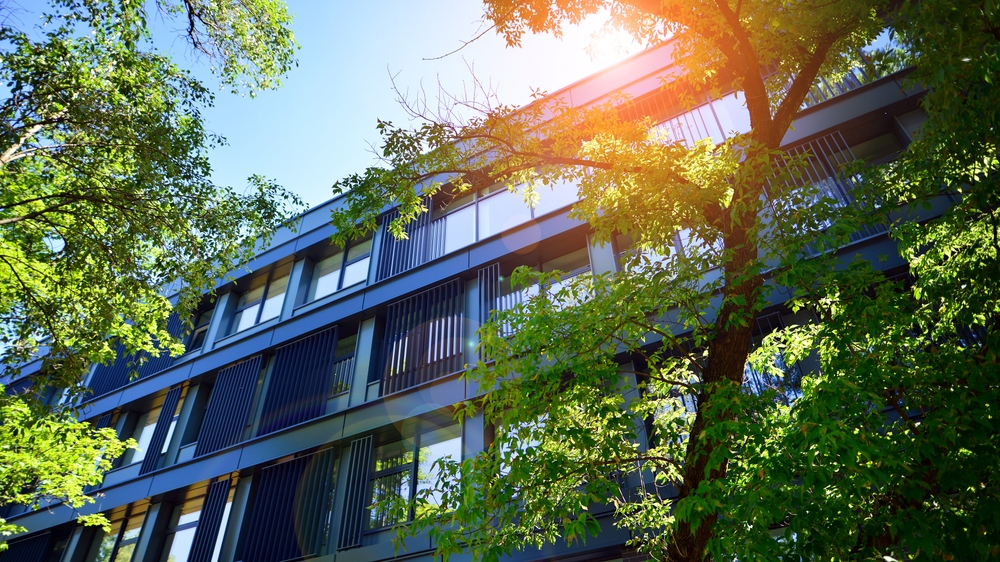Introduction :
Facades are the exterior faces of buildings, acting as the primary interface between the interior spaces and the external environment. They serve multiple purposes, including protection from weather conditions, thermal insulation, and enhancing the building’s aesthetic appeal. Over time, facade designs have evolved from simple protective barriers to complex systems that contribute significantly to the functionality and visual identity of buildings.
Types of Facades
Facades are architectural elements that serve both functional and aesthetic purposes, often acting as the front or exterior of a building. Here are some common types of facades:
Curtain Wall Facades
Curtain wall facades are non-structural cladding systems that are typically attached to the building’s frame. These facades are often made of lightweight materials like glass, aluminum, and steel. Curtain wall facades are popular in modern architecture due to their sleek appearance and ability to allow ample natural light into buildings. However, they require careful consideration of thermal performance and weatherproofing to ensure energy efficiency and durability.
Brick Facades
Brick facades have been used for centuries due to their durability and thermal properties. Bricks provide excellent insulation against heat and sound, making them a practical choice for both residential and commercial buildings. Modern brick facades can be designed to offer a contemporary look while maintaining the traditional benefits of brick construction. Regular maintenance, such as repointing, is necessary to ensure the longevity of brick facades.
Glass Facades
Glass facades are synonymous with contemporary architecture, offering a clean and transparent look that connects indoor and outdoor spaces. There are various types of glass facades, including double-glazed and triple-glazed systems, which provide enhanced thermal and acoustic insulation. While glass facades are aesthetically pleasing and allow for natural lighting, they must be designed with safety features such as laminated or tempered glass to prevent accidents.
Stone Facades
Stone facades are valued for their natural beauty, durability, and weather resistance. Different types of stone, such as granite, limestone, and marble, are used in facade construction. Stone facades offer a timeless aesthetic and can be customized to fit various architectural styles. They are highly resistant to environmental factors, making them ideal for buildings in harsh climates. However, the high cost and heavy weight of stone can be drawbacks in some projects.
Metal Facades
Metal facades are commonly made from materials like aluminum, steel, and copper. These facades are known for their strength, lightweight, and versatility in design. Aluminum facades, for example, are corrosion-resistant and can be easily formed into complex shapes, making them popular in modern architecture. Metal facades also offer excellent thermal and acoustic insulation properties, contributing to energy-efficient building designs. The environmental impact of metal production and the potential for corrosion are considerations when selecting metal facades.
Wooden Facades
Wooden facades bring a warm and natural aesthetic to buildings, often used in eco-friendly and sustainable designs. Various types of wood, such as cedar, pine, and oak, are treated to enhance durability and resistance to weather and pests. Wooden facades are renewable and have a lower carbon footprint compared to other materials. However, they require regular maintenance, including treatments and coatings, to prevent decay and extend their lifespan.
Composite Facades
Composite facades are made from a combination of materials, typically including metals, plastics, and natural fibers. These facades offer the benefits of each component, such as the strength of metal, the flexibility of plastic, and the insulation properties of natural fibers. Composite facades are lightweight, durable, and can be manufactured in various colors and textures. They are ideal for buildings that require a high degree of customization and performance.
Ventilated Facades
Ventilated facades, also known as rain screen systems, feature an outer cladding layer and an inner insulating layer, separated by a ventilated cavity. This design allows for continuous air circulation, which helps manage moisture and temperature variations. Ventilated facades improve the building’s thermal performance and protect the structural elements from weather-related damage. They are widely used in both new constructions and renovation projects for their efficiency and effectiveness.
Green Facades
Green facades incorporate living plants into the building’s exterior, creating a vertical garden. These facades contribute to environmental sustainability by improving air quality, providing natural insulation, and reducing the urban heat island effect. Green facades require careful planning and maintenance to ensure the health of the plants and the integrity of the building structure. They are a key component of eco-friendly and biophilic design approaches.
Precast Concrete Facades
Precast concrete facades are manufactured off-site and assembled on the building site, allowing for precise control over quality and design. These facades offer excellent structural support, fire resistance, and aesthetic versatility. Precast concrete facades can be customized with various finishes and textures to achieve the desired look. Their durability and low maintenance requirements make them a popular choice for large-scale projects.
Aluminum Facades
Aluminum facades are favored for their lightweight, durability, and ease of installation. Aluminum is highly resistant to corrosion, making it suitable for buildings in coastal areas. These facades can be anodized or powder-coated to achieve various colors and finishes. Aluminum facades offer good thermal and acoustic performance and can be integrated with other materials for enhanced functionality.
Stone Cladding Facades
Stone cladding involves attaching thin layers of natural or engineered stone to the building’s exterior. This technique provides the appearance of a solid stone wall without the associated weight and cost. Stone cladding facades are popular for their aesthetic appeal and durability. They require proper installation techniques to ensure stability and weather resistance.
Terracotta Facades
Terracotta facades have a rich history and are known for their warm, earthy tones. Modern terracotta panels are manufactured to meet high standards of performance and durability. These facades offer excellent thermal insulation and weather resistance. Terracotta facades can be used to create intricate designs and patterns, adding a unique character to buildings.
Cost-Effectiveness of Different Facades
The cost-effectiveness of a facade system depends on various factors, including initial costs, maintenance requirements, and long-term savings. While some materials, like stone and glass, may have higher upfront costs, their durability and low maintenance can result in long-term savings. On the other hand, materials like wood may be less expensive initially but require ongoing maintenance. Balancing these factors is crucial for selecting the most cost-effective facade for a project.
Energy Efficiency and Thermal Insulation
Facades play a critical role in a building’s energy efficiency. Materials like insulated glass, composite panels, and ventilated systems are designed to enhance thermal performance, reducing the need for heating and cooling. Energy-efficient facades not only lower operational costs but also contribute to environmental sustainability. Innovations such as smart facades that adjust to environmental conditions are at the forefront of facade technology.
Acoustic Performance of Facades
In urban environments, noise reduction is a significant concern. Facades made from materials like brick, stone, and specially designed composites can provide effective sound insulation. Acoustic performance is particularly important for buildings in noisy areas, such as near highways or airports. Designing facades with sound-absorbing materials and incorporating buffer zones can greatly improve indoor acoustic comfort.
Fire Safety and Facade Design
Fire safety is a paramount consideration in facade design. Materials like precast concrete, metal, and certain composites offer high fire resistance. Building codes and regulations often dictate the fire performance requirements of facades. Incorporating fire-resistant materials and ensuring proper installation techniques are essential for creating safe building exteriors.
Sustainability and Environmental Impact
Sustainable facades utilize eco-friendly materials and designs to minimize environmental impact. Green facades, ventilated systems, and the use of recycled or renewable materials contribute to sustainability. Sustainable facade designs aim to reduce the carbon footprint of buildings and enhance their energy efficiency. Green building certifications, such as LEED, often require specific facade performance criteria to be met.
Future Trends in Facade Design
The future of facade design is shaped by advancements in materials, technology, and environmental considerations. Innovations such as smart facades that respond to environmental changes, the use of 3D printing for custom designs, and the integration of renewable energy sources are paving the way for the next generation of building exteriors. Trends also include a focus on sustainability, with increased use of eco-friendly materials and designs that promote energy efficiency.
Conclusion
Facades are a vital component of building design, influencing both the aesthetics and functionality of structures. Understanding the various types of facades, their benefits, and their applications helps architects and builders make informed decisions. As technology and sustainability practices evolve, facade designs will continue to advance, offering new possibilities for creating innovative and efficient building exteriors.


Leave a Reply